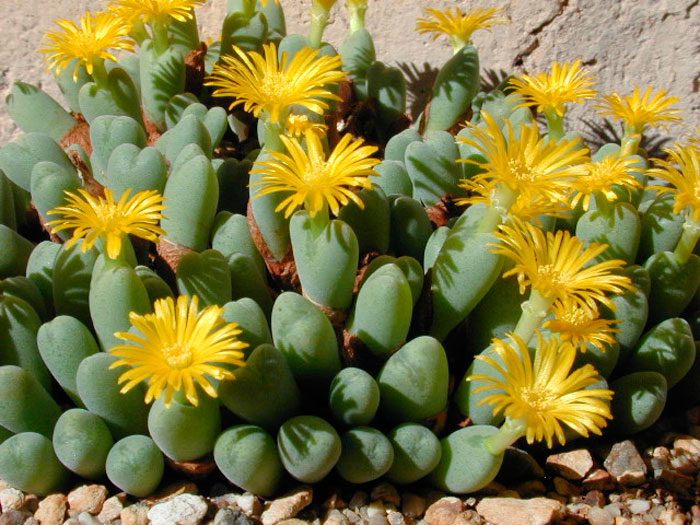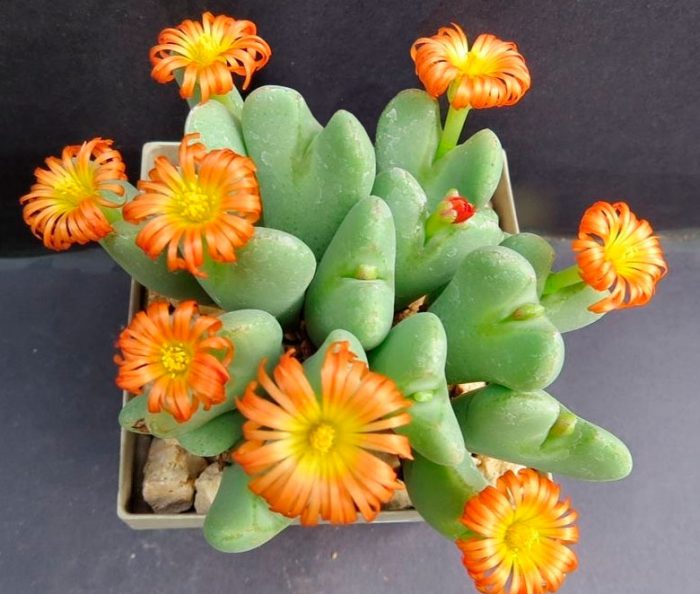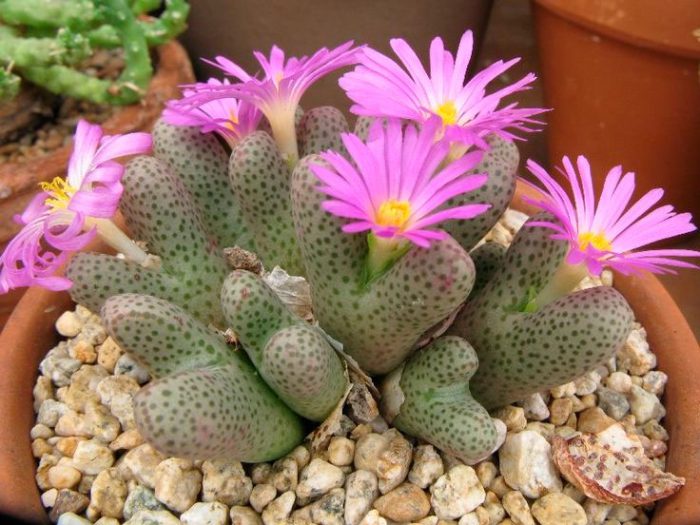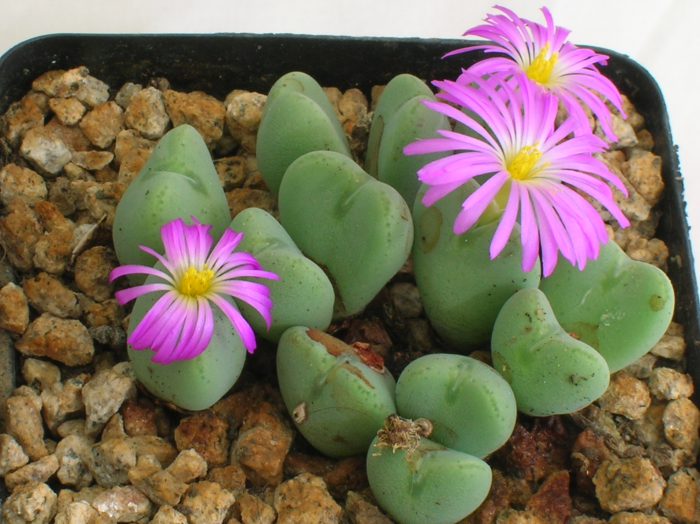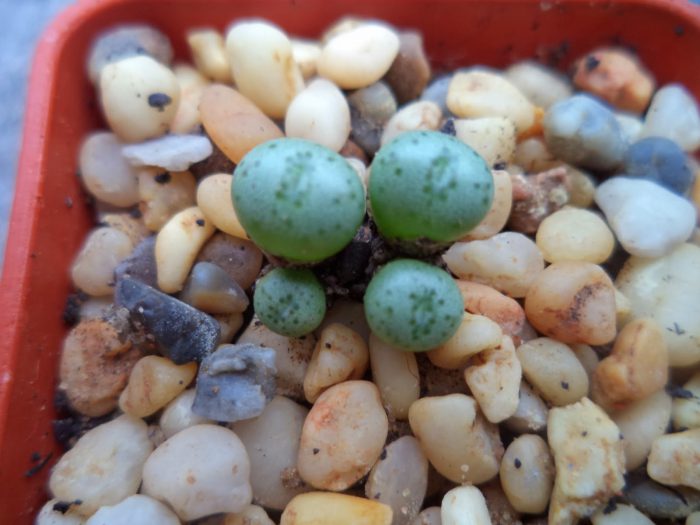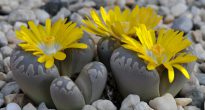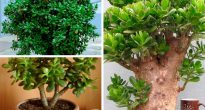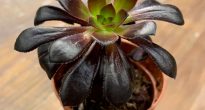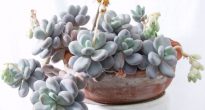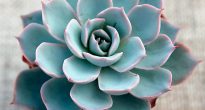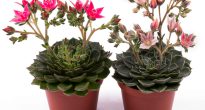Among the many succulent plants, those that look like pebbles stand out. This is what the people call them - “living stones". Scientifically, they are called conophytums... They come from the rocky deserts located in southern Africa.
The genus Konophytum belongs to the Aizov family. Their distinctive feature is the presence of an aerial part, represented by 2 fleshy intergrown leaves. They have a heart-shaped shape, or similar to a lumpy ball, or are presented in the form of a truncated cone with rounded edges. The short stem is in the soil. The color of these leaves can be blue, green or brown, and small spots may be present on their surface. This allows the plant to practically merge with the numerous stones, among which it prefers to grow.
The flowering of the conophytum is unusually beautiful. It begins almost simultaneously with a period of active growth. The flowers are quite large, have a rich color, and in shape they resemble a chamomile or a funnel.
Such a plant has a clear life cycle associated with a period of dormancy and vegetation, which falls just at the time when the time of rains and droughts is observed in the homeland of the flower. Such periods may differ slightly for different species. However, for the most part, the growing season is observed in winter, and the dormant period is from the beginning of spring to the beginning of autumn months or from the end of winter to mid-summer days.
Such a plant has an unusual feature, namely, young leaves grow inside old ones. At the same time, the old leaves dry out over time and become thinner and thinner. And they are a kind of protection for young foliage.
Content
Conophytum care at home
Temperature regime and illumination
Such a plant will grow and develop normally in a dry and cool (10 to 18 degrees) room, in which there should be fairly good ventilation. Prefers diffused lighting. Do not overheat the conophytum. It also needs to be protected from direct sunlight, due to which burns may appear on the surface of the leaves, especially young specimens. It is recommended to gradually accustom young plants to sunlight.
Earth mix
A suitable soil must be loose. So, to prepare the soil mixture, it is necessary to combine river sand, leaf humus and red clay, taken in a ratio of 2: 2: 1.A commercial soil mixture intended for succulents and cacti is also suitable for planting. It must be remembered that peat mixtures cannot be used for planting.
Top dressing
Top dressing is carried out relatively rarely, as a rule, 1 or 2 times in 12 months. Potash fertilizers containing not very large amounts of nitrogen are suitable for this. Take ½ of the recommended dose. Newly transplanted plants are not fed.
How to water
Watering "live stones" through the pallet, while liquid should not be allowed to fall on the surface of the leaves. Spraying is sometimes carried out. But in this case, it is necessary that the flower is as if shrouded in fog, and there are no water droplets on the leaves.
Dormant period
When growing conophytum, one should not forget about its life cycle. So, you should completely stop watering for the rest time. Watering should be started again after the onset of a period of active growth. So, at this time, a new one should appear from an old dried leaf. The plant also has flowering during this period. In various species, it lasts from June to September.
In the autumn period, watering should be carried out once every 7 days, and in the winter - once every 4 weeks is enough. Slightly increase the frequency of watering at the end of the active growth period (February – March). At this time, new leaves begin to form inside the old ones.
The leaves should become faded and shriveled, and this is a completely natural process.
Transplant features
Often such plants should not be transplanted. As a rule, the transplant is carried out once every 2-4 years. The transplant is allowed to be carried out regardless of the time of year, but still the best time for such a procedure is the end of the dormant period. Conophytum should not be watered before transplanting. All old soil must be removed from its root system, and if desired, you can rinse it. Low and narrow containers are suitable for planting. It is important to make a good drainage layer of expanded clay at the bottom of at least 1.5 centimeters in height. After the transplant, the first watering is carried out after half a month, and feeding for a while should be stopped.
These plants are long-lived. So, they can live from 10 to 15 years. However, as they grow older, they grow. Their stem becomes longer, from which the conophytums lose their spectacular appearance.
Reproduction methods
Such a plant can be propagated by cuttings, as well as seeds.
To propagate by cuttings, you must carefully cut off the leaf with a part of the stem and plant it for rooting in the soil. The first watering is carried out only 3 weeks after planting, during this time roots should grow from the cutting. Some experienced flower growers recommend leaving the stalk outdoors to dry for 1-2 days. Then the cut is treated with heteroauxin powder or colloidal sulfur.
Seed propagation is more difficult. This plant has cross-pollination. Small seeds mature for a very long time, about 12 months. Plucked fruits with seeds inside are placed in a cool, dark place. Before sowing, they need to be soaked for several hours.
Sowing is carried out at the beginning of the period of active growth in the autumn. They are laid out on the surface of moistened soil, and sprinkled with sand on top. It is recommended to cover the container with foil. Until the first shoots appear, the substrate should always be slightly damp.
Seeds germinate best in cool conditions, but they need to ensure that daily temperatures fluctuate. So, in the daytime it should be 17-20 degrees, and at night - no more than 10 degrees.
After half a month after emergence, the film should be removed. The plant is placed in a cool, well-ventilated place. After 12 months, the formation of the plant ends, and the first flowering occurs after 1.5-2 years.
Pests and diseases
Quite resistant to diseases and pests. In rare cases, a worm can settle either spider mite... Also, the plant may begin to rot due to excessive moisture. Poor watering, high air temperature and lack of nutrients negatively affect the growth and development of "living stones".

